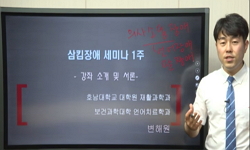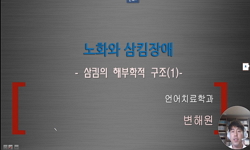재난 유형의 복합화 및 불규칙성이 날로 늘고 있는 가운데 다양한 자연적·인문적 요인에 의하여 문화재가 파괴되고 손상되는 사례가 빈번해짐에 따라 보다 적극적인 사전 예방적 차원에서�...
http://chineseinput.net/에서 pinyin(병음)방식으로 중국어를 변환할 수 있습니다.
변환된 중국어를 복사하여 사용하시면 됩니다.
- 中文 을 입력하시려면 zhongwen을 입력하시고 space를누르시면됩니다.
- 北京 을 입력하시려면 beijing을 입력하시고 space를 누르시면 됩니다.
https://www.riss.kr/link?id=A106253092
- 저자
- 발행기관
- 학술지명
- 권호사항
-
발행연도
2019
-
작성언어
Korean
- 주제어
-
KDC
900
-
등재정보
KCI등재
-
자료형태
학술저널
-
수록면
80-105(26쪽)
- DOI식별코드
- 제공처
-
소장기관
-
건국대학교 상허기념중앙도서관

-
경북대학교 중앙도서관

-
계명대학교 동산도서관

-
고려대학교 도서관

-
동국대학교 중앙도서관

-
명지대학교 인문캠퍼스 도서관

-
서강대학교 로욜라중앙도서관

-
서울교육대학교 도서관

-
서울대학교 중앙도서관

-
성균관대학교 중앙학술정보관

-
성균관대학교 중앙학술정보관

-
숙명여자대학교 중앙도서관

-
연세대학교 학술문화처 도서관

-
연세대학교 학술문화처 도서관

-
영남대학교 중앙도서관

-
영남대학교 중앙도서관

-
이화여자대학교 중앙도서관

-
전남대학교 중앙도서관

-
전북대학교 중앙도서관

-
전주대학교 학술정보관

-
충남대학교 중앙도서관

-
충북대학교 중앙도서관

-
홍익대학교 중앙도서관

-
건국대학교 상허기념중앙도서관
-
0
상세조회 -
0
다운로드
부가정보
국문 초록 (Abstract)
재난 유형의 복합화 및 불규칙성이 날로 늘고 있는 가운데 다양한 자연적·인문적 요인에 의하여 문화재가 파괴되고 손상되는 사례가 빈번해짐에 따라 보다 적극적인 사전 예방적 차원에서의 문화재 보존·관리 필요성이 높아지고 있다. 이에 문화재청은 문화재의 체계적인 보존·관리를 위해 2005년 12월 정기조사를 법제화하였고, 최근에는 법령을 개정하여 조사 주기를 5년에서 3년으로 단축하는 한편, 정기조사 대상을 등록문화재까지 확대하는 등 제도적으로 문화재 보존·관리 역량을 강화하고자 노력하고 있다. 한편 시·도지정문화재의 정기조사는 조례에 따라 광역자치단체 중심으로 시행하도록 되어 있는데, 서울특별시의 경우 도심에 위치한 문화재가 많고 탐방 수요가 높아 상대적으로 예방적 차원의 관리가 더욱 중요함에 따라 2008년 조례를 개정해 정기조사의 법적 근거를 마련하고, 2016년에서 2018년까지 시지정문화재 전체를 대상으로 정기조사를 실시하였다. 이에 개별 문화재를 중심으로 진행된 조사의 결과를 취합하고 종합적인 관리 현황을 진단함으로써 보다 효과적인 관리방안을 마련하기 위한 검토가 필요한 시점이다. 따라서 본 연구는 서울특별시 지정문화재에 대하여 3개년(2016~2018) 동안 추진된 정기조사 결과를 중심으로 종합적인 관리 실태를 점검함으로써 성과 및 한계를 진단하고 개선방안을 모색하는 한편, 서울특별시가 추진 중인 통합 관리 시스템에 기초 DB 탑재를 위한 방안을 제언하였다. 구체적으로 정기조사 운영 지침상의 조사 서식을 준용하되 시지정문화재의 특성을 고려하여 조사 서식의 유형을 재분류하고 세분화하였다. 또한 조사 범위 및 방식에 있어 일관성 있고 구체적인 정보 기술을 위한 매뉴얼을 개발하였다. 이를 토대로 정기조사 결과를 분석한 바 조사 대상 문화재 총 521건 가운데 401건(77.0%)은 전반적으로 보존·관리 상태가 양호하였고, 102건(19.6%)은 주의관찰, 정밀진단, 수리 등 별도의 조치가 필요한 것으로 확인되었다. 이에 대한 조치로 관리 상태 및 시급성에 따라 중점 관리 대상을 선정하여 우선적으로 관리하는 방안을 제안하였다. 향후 본 연구를 기초로 보다 합리적이고 체계적인 문화재 보존·관리 계획의 수립 및 추진을 도모하는 한편, 중장기적으로 서울특별시가 추진하고 있는 통합 관리 시스템에 기초 DB를 효과적으로 제공함으로써 사전 예방적이고 효율적인 문화재 관리 체계의 구축을 통한 안전하고 지속가능한 문화재 보호의 토대가 마련될 수 있기를 기대한다.
다국어 초록 (Multilingual Abstract)
With the increasing complexity and irregularity of disaster types, the need for cultural asset preservation and management from a proactive perspective has increased as a number of cultural properties have been destroyed and damaged by various natural...
With the increasing complexity and irregularity of disaster types, the need for cultural asset preservation and management from a proactive perspective has increased as a number of cultural properties have been destroyed and damaged by various natural and humanistic factors. In consideration of these circumstances, the Cultural Heritage Administration enacted an Act in December 2005 to enforce the regular commission of surveys for the systematic preservation and management of cultural assets, and through a recent revision of this Act, the investigation cycle has been reduced from five to three years, and the object of regular inspections has been expanded to cover registered cultural properties.
According to the ordinance, a periodic survey of city- or province-designated heritage is to be carried out mainly by metropolitan and provincial governments. The Seoul Metropolitan Government prepared a legal basis for commissioning regular surveys under the Seoul Special City Cultural Properties Protection Ordinance 2008 and, in recognition of the importance of preventive management due to the large number of cultural assets located in the city center and the high demand for visits, conducted regular surveys of the entire city-designated culturalassets from 2016 to 2018. Upon the first survey being completed, it was considered necessary to review the policy effectiveness of the system and to conduct a comprehensive review of the results of the regular surveys that had been carried out to enhance the management of cultural assets. Therefore, the present study examined the comprehensive management status of the cultural assets designated by the Seoul Metropolitan Government for three years (2016-2018), assessing the performance and identifying limitations. Additionally, ways to improve it were sought, and a DB establishment plan for the establishment of anintegrated management system under the auspices of the Seoul Metropolitan Government was proposed. Specifically, survey forms were administered under the Guidelines for the Operation of Periodic Surveys of National Designated Cultural Assets; however, the types of survey forms were reclassified and further subdivided in consideration of the characteristics of the designated cultural assets, and manuals were developed for consistent and specific information technologies in respect of the scope and manner of the survey. Based on this analysis, it was confirmed that 401 cases (77.0%) out of 521 cases were generally well preserved;however, 102 cases (19.6%) were found to require special measures such as attention, precision diagnosis, and repair. Meanwhile, there were 18 cases (3.4%) of unsurveyed cultural assets. These were inaccessible to the investigation at this time due to reasons such as unknown location or closure to the public. Regarding the specific types of cultural assets, among a total of 171 cultural real estate properties, 63 cases (36.8%) of structural damage were caused by the failure and elimination of members , and 73 cases (42.7%) of surface area damage were the result of biological damage. Almost all plants and geological earth and scenic spots were well preserved. In the case of movable cultural assets, 25 cases (7.1%) among 350 cases were found to have changed location, and structural damage and surface area damage was found according to specific material properties, excluding ceramics. In particular, papers, textiles, and leather goods, with material properties that are vulnerable to
damage, were found to have greater damage than those of other materials because they were owned and managed by individuals and temples. Thus, it has been confirmed that more proactive management is needed. Accordingly, an action plan for the comprehensive preservation and management status check shall be developed according to management status and urgency, and the project promotion plan and the focus management target should be selected and managed first. In particular, concerning movable cultural assets, there have been some cases in which new locations have gone unreported after changes in ownership (management); therefore, a new system is required to strengthen the obligation to report changes in ownership (management) or location. Based on the current status diagnosis and improvement measures, it is expected that the foundation of a proactive and efficient cultural asset management system can be realized through the establishment of an effective mid- to long-term database of the integrated management system pursued by the Seoul Metropolitan Government
동일학술지(권/호) 다른 논문
-
북한지역 SOC사업 구상과 문화유산 - 북한 문화유산의 효율적인 조사·관리를 위한 제언
- 국립문화재연구원
- 김범철
- 2019
- KCI등재
-
- 국립문화재연구원
- 최종택
- 2019
- KCI등재
-
독일 통일과정에서 문화유산 조사와 보존관리 - 고고학 조사와 유적 보존을 중심으로
- 국립문화재연구원
- 김종일
- 2019
- KCI등재
-
조선 중기 경주 서출지(書出池) 일원의 정원 조영과 경관 특성
- 국립문화재연구원
- 김형석
- 2019
- KCI등재






 RISS
RISS



